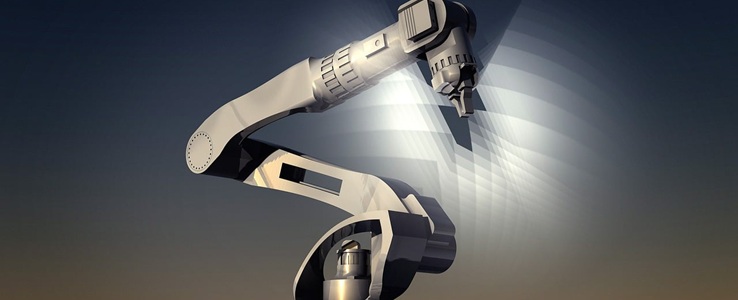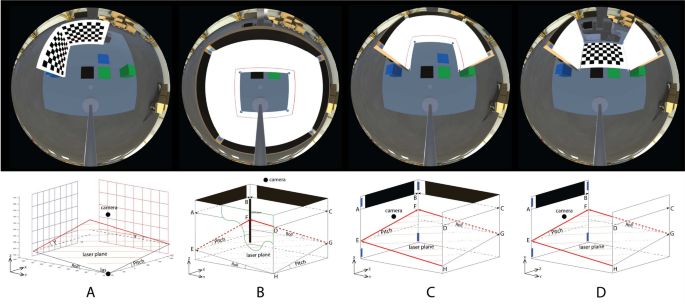Industrial robots’ learning gets a boost with digital twin tech

Accenture and Schaeffler AG are collaborating to advance industrial automation through physical AI and robotics.
At Hannover Messe 2025, the firms are showcasing various automation scenarios, ranging from human-centric workflows to full robotic integration.
The demonstration features industrial automation systems, autonomous mobile robots (AMRs), Schaeffler’s EMMA mobile manipulator cobot, and humanoid robots such as Agility Robotics’ Digit and Sanctuary AI’s Phoenix.
The initiative leverages AI, simulation, and data technologies from NVIDIA and Microsoft to enhance efficiency and adaptability in industrial environments.
“Physical AI is reinventing industrial automation as it offers efficient ways to train and control entire fleets of AMRs, mobile adaptive manipulators and general-purpose humanoid robots,” said Patrick Vollmer, Global Industry Group Lead, Industrials, Accenture, in a statement.
Digital factory evolution
Through the use of digital twins on the NVIDIA Omniverse platform, Accenture is assisting Schaeffler in creating smarter factories. Schaeffler can plan industrial layouts more effectively and save setup time thanks to these virtual models. They can optimize material flow and guarantee seamless human-robot collaboration by modeling production lines and workstations.
Virtual commissioning aids in figuring out each facility’s ideal automation level. From primarily manual labor to the use of AMRs for transportation and more sophisticated robotic systems like Schaeffler’s EMMA and general-purpose humanoid robots in highly automated environments, the project investigates various work arrangements. According to an Accenture study, 49 percent of factory managers expect AMRs to play a key role in future factories, while 43 percent believe humanoid robots will become standard in assembly lines.

To further develop physical AI and humanoid robotics, Accenture, and Schaeffler are testing Mega, an NVIDIA Omniverse Blueprint, to simulate and evaluate robot fleets in digital versions of factories and warehouses.
The project demonstrates how Agility Robotics’ Digit handles tasks like moving totes and transporting items for assembly. Sanctuary AI’s humanoid robot, Phoenix, is also tested in digital environments, learning real-world tasks by observing simulations.
For example, in one of Schaeffler’s spare part centers, Phoenix assembles kits for individual orders. This learning is enhanced by NVIDIA Metropolis, which records human and robot movements and translates them into digital simulations for further training. Through these innovations, they improve efficiency and automation in industrial settings.
“Tomorrow’s factories require complex collaboration between humans, industrial automation systems and multi-robot fleets. By using Mega and NVIDIA Omniverse to simulate and test various types of robots at scale in industrial digital twins, Accenture and Schaeffler are reinventing their industrial operations with physical AI,” said Mike Geyer, head of digital twins at NVIDIA, in a statement.
AI-optimized robotics
Accenture and Avanade, in collaboration with Schaeffler, are also optimizing live robotics operations using simulated data from NVIDIA Omniverse. This data helps improve warehouse and shopfloor efficiency by preventing congestion and enhancing robot performance.
According to the firms, by feeding simulation insights into Microsoft Fabric, an AI-powered data platform, site managers can compare key performance indicators like availability, utilization, and overall equipment effectiveness. This allows them to detect potential issues early and take corrective action.
Accenture and Avanade have deployed a solution at Schaeffler’s manufacturing facility in Schweinfurt, Germany, that integrates Microsoft Fabric with a factory operations agent driven by generative AI. With this solution, employees can ask questions in normal language, get real-time production information, and solve problems more quickly.
The goal of future advancements is to incorporate virtual factories so that planners and engineers can work with simulation data more naturally. They will be able to modify simulation parameters and investigate various operational situations with the use of dashboards and voice commands. They aim to improve decision-making, increase productivity, and allow smarter automation in industrial contexts by utilizing AI, simulation, and real-time data analysis.
link






